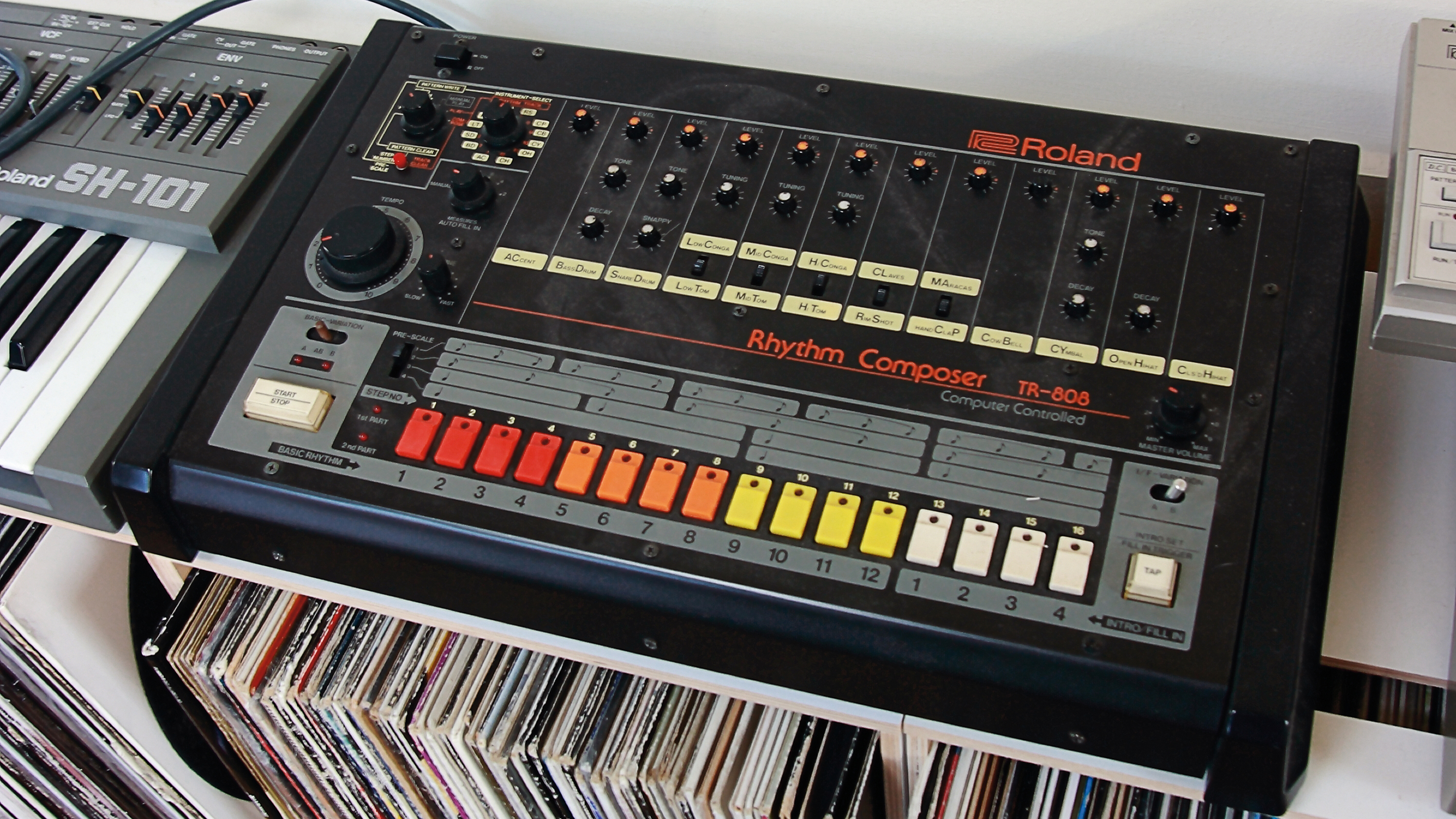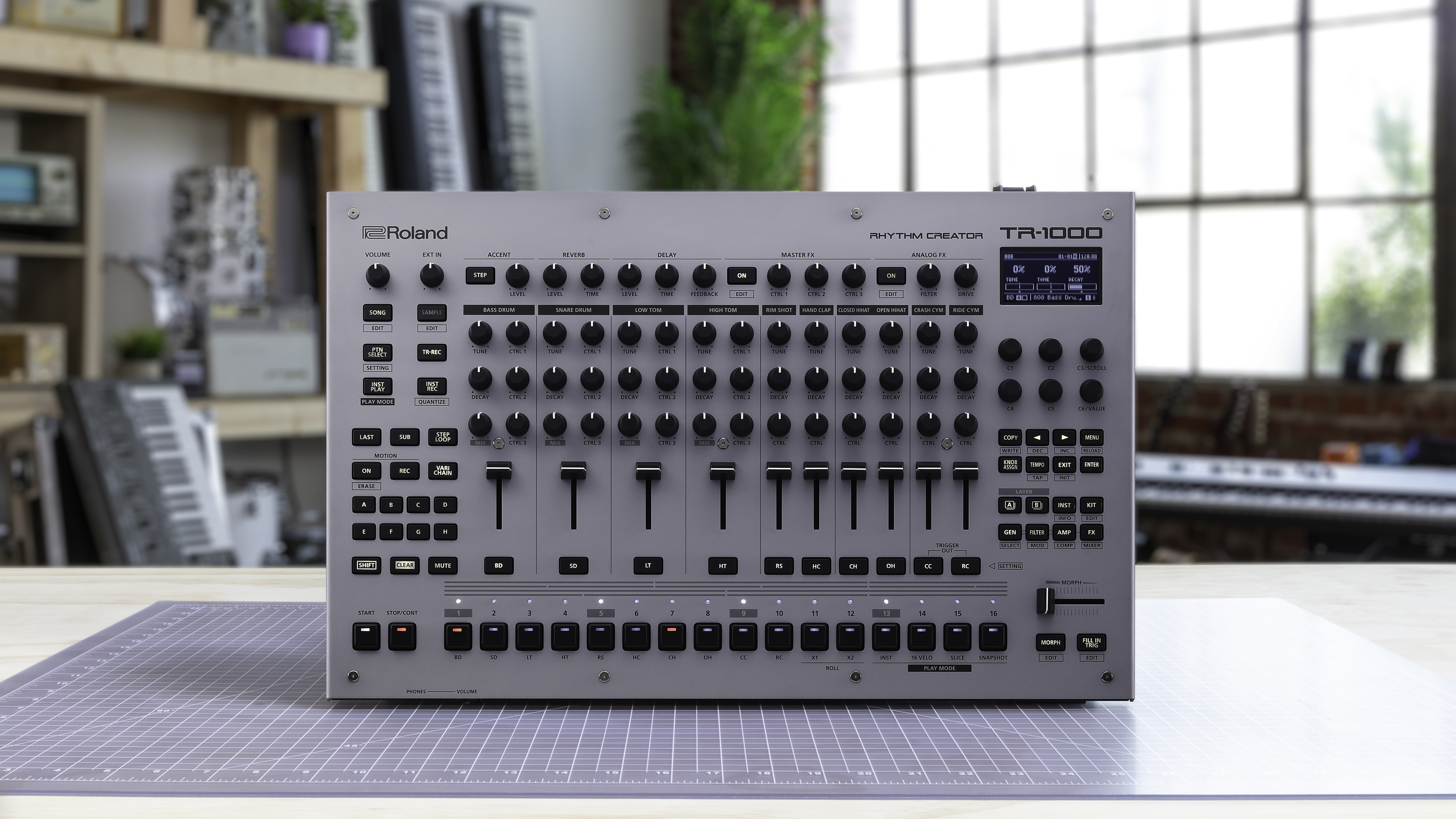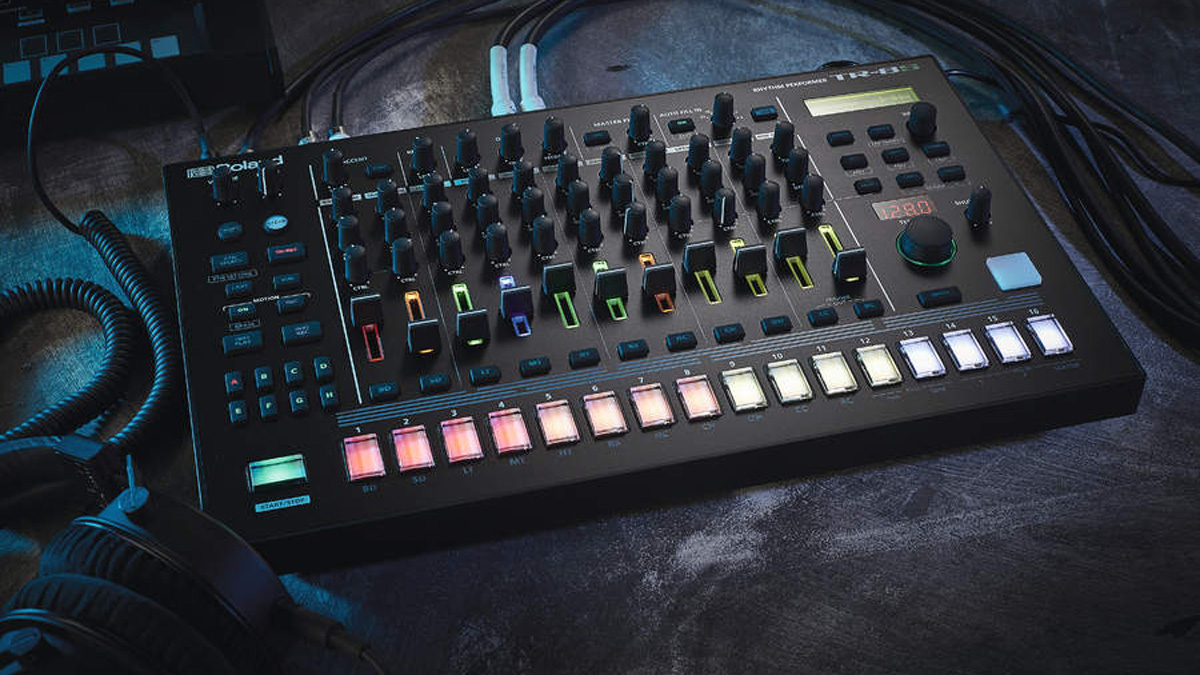With the TR-1000 Roland has finally given analogue purists what they want – so can we move on from 808 and 909 clones now?
Roland’s latest drum machine looks great – and its ‘80s inspirations are undisputed classics – but can we agree we now have enough X0X emulations?

This week, Roland unveiled the TR-1000, its first drum machine in over 40 years to include genuine analogue sound generation.
Although much about this new instrument is thoroughly modern and designed to compete with machines from the likes of Elektron, undoubtedly its most eye-catching feature is the fact it contains 16 analogue circuits that claim to faithfully recreate sounds from the iconic TR-808 and TR-909.
A certain subsect of Roland fans has been crying out for this for years. Ever since the company began reviving its ‘80s drum machine heritage with the launch of the TR-8 more than a decade ago, new products have regularly been met with comments lamenting Roland’s unwillingness to revive the analogue approach behind the TR-808 and most of the TR-909’s sounds.
Although Roland has brought us multiple instruments in the past decade that recreate elements of the 808 or 909 in some way, these have invariably been based on either Roland’s Analog Circuit Behavior emulation technology or the PCM-based Zen Core engine.
With the TR-1000, Roland is finally giving the people what they want. The question is, is it what any of us actually need?

Let me be clear, I’m not saying this as a critique of the TR-1000. For one thing, I’m yet to spend the time needed with one in person in order to deliver a proper verdict, which will come in the form of our full review later this week. For another, I have one in front of me as I write this and, based on what I’ve seen so far, there’s a lot I really like about it. The ability to layer multiple forms of drum generation, the inclusion of SP-404-like sampling and its comprehensive connectivity all amount to a creative and capable-looking machine.
For my money though, the inclusion of ‘authentic’ 808 and 909 sounds are far from being the most exciting element. That’s not to say I have no love for the sound of those classic machines. As a fan of dance music and hip-hop, those sounds are, obviously, staples.
Want all the hottest music and gear news, reviews, deals, features and more, direct to your inbox? Sign up here.
They are also incredibly ubiquitous. Sampled 808 and 909 kits are stock sounds in any DAW, Roland has released multiple updates takes on them, Behringer has its ‘tribute’ versions, and many contemporary drum machines come equipped with sounds that do a decent approximation.

Of course, these aren’t all entirely authentic. You’ll never capture the exact nuances of an analogue machine using simple one shot samples, and there are arguments to be made that emulations don’t capture the exact feel of things like the swing and accents of the original machines.
But in many cases these versions are good enough to be convincing. Particularly in the case of Roland’s largely on-the-money ACB emulations.
I’ve never had a chance to directly A/B test an original machine with the ACB sounds, although I have spent time comparing analogue and virtual analogue recreations – and I think it’s fair to say it’s not easy to tell a ‘real’ version from a virtual one.
I’ve heard it argued that when played in isolation on a big sound system, it’s easy to tell an original TR machine from a modern recreation. Perhaps. But I’d also argue that nobody listens to a drum machine in that way.
In the studio, sounds are invariably edited, mixed and mastered, the process of which can easily mask any differences between a real and faux X0X. In a live or club context, any drum sounds are likely to be processed and limited, then played out in an acoustically imperfect space filled with people dancing, drinking and talking. Nobody in that context is picking up on the authenticity of your analogue beats.
There are plenty of examples of notable artists using Roland’s ACB-powered instruments in these ‘pro’ contexts too. Last year, for example, I sat down with 808 State founder and acid house figurehead A Guy Called Gerald to talk about how he uses the compact T-8 Beat Machine onstage.
All of which isn’t to minimise the magic of the original machines. They are hugely influential and sought after for a reason, although it would certainly be an oversimplification to say this is because they represent some Platonic ideal of analogue sound that every instrument that has followed has failed to capture.
There is something almost Quixotic about the desire for an ‘authentic’ modern take on the 808 or 909. For one thing, there was a fair amount of variation in how different original units sounded, particularly in the case of the 808.
What’s more, some of the sounds we’ve come to associate with the 808 and 909 we are used to hearing heavily-processed and out of context. In hip-hop terms, the 808s is synonymous with booming, pitched basslines that can’t actually be created directly from an original unit, due to its lack of bass drum tuning.
The potential pitfall here lies in the fact that analogue circuitry comes at a cost – shut up for a moment Behringer fans, we’ll get to you – and the TR-1000 lands with an asking price of $2,699/£2,286, putting it right at the top end of the drum machine market.
I’m not saying that the price is unreasonable. On paper at least, there are a lot of impressive features and flexible connectivity options that warrant a top-range price point. The similarly analogue-equipped Elektron Analog Rytm retails for a price that is only marginally cheaper, and the Erica Synths Perkon HD-01 is in a similar ballpark.
All that being said though, there’s little doubt that had Roland used purely digital sound generation but kept the TR-1000 specs otherwise the same it would have hit the market at a considerably lower price point.
The risk, for Roland, is that the company is effectively asking those analogue purists to put their money where their mouth is and prove their willingness to pay more for an X0X recreation based on analogue circuitry.
"It's time we placed more value in interesting new sound concepts than minor refinements of the same sounds that have been around for 40 years."
To Roland’s credit, the TR-1000 is far more than just a rerun of the original 808 or 909. Even focusing just on those analogue circuits, Roland says it has “added parameters, expanded ranges and improved the dynamics”, which seems like a welcome tacit admission of the limitations of some of those original designs.
I’m particularly interested to explore how far those extended ranges allow the analogue sounds to be pushed beyond those of the original machines. While the authentic vintage designs might be the marketing tentpole of the TR-1000, the ability for musicians to coax new sounds out of it – or not – could be what influences whether we’re still talking about it in 10 or 20 years time.
Although Roland has been guilty of repackaging its ACB and Zen Core sounds into multiple instruments in recent years, to be fair to the company, it seems keen to move forward from the original designs too.
Instruments like the S-1 and SH-4 grooveboxes, for example, have each incorporated forward-thinking wave editing tools alongside the usual nostalgic sounds. With the TR-8S too, for all the talk of the analogue emulations, it’s the FM sounds, sampled tones and modern sequencing touches that helped elevate it to modern classic status.
Whether it proves successful or not, the TR-1000 feels like the natural peak of our collective desire for X0X authenticity. For those who’ve been holding out for a contemporary, genuinely-analogue, Roland-branded version of those classic machines, you finally have it.
Those of us without the money to spend can make do with the still-impressive ACB versions or, yes, Behringer’s RD-8 and RD-9, which if nothing else really nail the rugged, chunky feel of working with an original machine. Plus there’s plenty of more loosely-inspired takes from the likes of Jomox, MFB and others.
Ultimately, no amount of hardware authenticity is going to be the factor that makes or breaks an electronic musician. For all that the original units were pivotal to the evolution of genres in the ’80s and ’90s, much of that comes down to the musicians who dedicated themselves to exploring their capabilities and nuances.
Jeff Mills is arguably the artist most closely associated with the TR-909, but as he explained when he spoke to Future Music in 2022, he credits much of that to his ongoing commitment to learning new, exploratory ways to use the drum machine.
“For me, the TR-909 is what I really like to work with, but with any of these instruments if you just think about and approach them differently you’ll find a way to generate a different type of sound,” he says.
“I’d advise anyone who makes electronic music to just go into your studio, pick one machine and try to do something with it that you’ve not done before. Try to make it do something different. No one has to know what you did, but see where that leads.”
Again, none of this is intended as a critique of the TR-1000. I also totally understand the appeal for those who work with an original 808 or 909 in the studio – plenty of artists I really respect own original machines and if you can afford one, I can see the appeal.
Nor is it a plea to stop using the sounds themselves – from warm subby 808 kicks to crisp 909 claps, there's still plenty of mileage to be had from those classic tones. But when it comes to the hardware and software we pine over, it's time we placed more value in interesting new sound concepts than minor refinements of the same sounds that have been around for 40 years.
The TR-1000 is another welcome addition to a long lineage of TR-808 and TR-909 inspired machines. But can we agree, at least for a few years, we have enough access to those sounds now. It’s time we all made space for something new.
I'm the Managing Editor of Music Technology at MusicRadar and former Editor-in-Chief of Future Music, Computer Music and Electronic Musician. I've been messing around with music tech in various forms for over two decades. I've also spent the last 10 years forgetting how to play guitar. Find me in the chillout room at raves complaining that it's past my bedtime.
You must confirm your public display name before commenting
Please logout and then login again, you will then be prompted to enter your display name.
